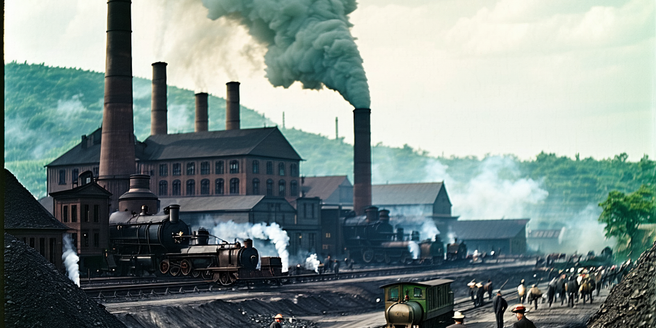
Impact of the Industrial Revolution on Climate Patterns
The Industrial Revolution marked a significant turning point in history, profoundly affecting climate patterns. The massive increase in coal burning led to heightened greenhouse gas emissions, notably carbon dioxide, contributing to global warming. Urban areas experienced localized weather changes, with increased temperature and altered precipitation patterns due to dense factory setups. These changes were among the earliest instances of human-induced climate alterations. Industrial processes released particulate matter, affecting cloud formation and rainfall dynamics. The revolution’s legacy on climate highlights the critical link between industrialization and environmental change, setting the stage for contemporary climate challenges.
Innovations in Industry and Their Environmental Effects
The Industrial Revolution was a time of remarkable technological advancements that drastically transformed industries. Notably, this era also marked the beginning of modern environmental awareness, as the impacts of unchecked industrialization became increasingly apparent. Steam power, mechanization, and innovations in manufacturing optimized production but came with environmental costs. These breakthroughs accelerated resource extraction, leading to widespread environmental degradation. Deforestation for materials and the relentless pursuit of coal resulted in significant habitat destruction and biodiversity loss. Air and water pollution escalated, as industrial waste was often unregulated. These innovations, while boosting economic growth and societal progress, underscored the need for thoughtful approaches to minimize environmental harm—lessons crucial in today’s context of sustainable development.
Pioneering Weather Recording During the Industrial Era
The Industrial Revolution also heralded advances in meteorological science. As industries grew, so did the need to understand weather impacts, leading to systematic weather recording. Early meteorologists began implementing gauges and instruments to track temperature, wind, and precipitation. This era saw the birth of structured meteorological observations, driven by the practical needs of agricultural and maritime industries. These efforts laid the foundation for modern weather forecasting by enhancing data collection accuracy and consistency. The industrial era’s curiosity and necessity-driven innovation in weather recording play a pivotal role in contemporary meteorology, contributing to the forecasting capabilities we rely on today.
Coal Consumption and Atmospheric Changes
Coal was the cornerstone of the Industrial Revolution, powering factories and transportation, but it also significantly altered atmospheric conditions. The large-scale burning of coal released unprecedented levels of carbon dioxide, changing atmospheric composition over time. Sulfur dioxide emissions led to acid rain, damaging ecosystems and infrastructures. The soot and particulates emitted contributed to air pollution, posing health hazards. These environmental impacts were initially overlooked, with little understanding of their long-term consequences. As coal consumption intensified, so did the atmospheric changes, spotlighting the link between industrial fuel use and environmental transformation—an ongoing reflection in today’s climate discourse.
Case Studies: Weather Shifts in Industrial Hubs
During the Industrial Revolution, cities like Manchester and Pittsburgh experienced notable weather shifts due to burgeoning industrial activities. In Manchester, the dense concentration of factories led to a phenomenon termed ‘urban heat island,’ where city temperatures rose significantly higher than surrounding areas. Similarly, Pittsburgh, known for its steel production, saw air quality degradation and altered precipitation patterns linked to industrial emissions. These case studies illustrate the localized weather shifts attributable to industrial activities, offering vital insights into early anthropogenic climate impact. Such historical observations serve as critical reference points for understanding current and future climate dynamics in industrial regions.
Transitioning to Sustainable Practices Post-Industrialization
The post-industrial era presents both challenges and opportunities in transitioning to sustainable practices. As awareness of environmental impacts grows, industries are exploring cleaner technologies and renewable energy sources. The shift towards sustainability involves reevaluating production processes, reducing carbon footprints, and implementing circular economy principles. Government regulations and consumer demand for eco-friendly products drive this transformation. While the legacy of the Industrial Revolution poses hurdles, it also fuels innovation in addressing climate change. By learning from past industrial practices, societies can embrace sustainable development, balancing economic growth with environmental stewardship in an increasingly eco-conscious world.
